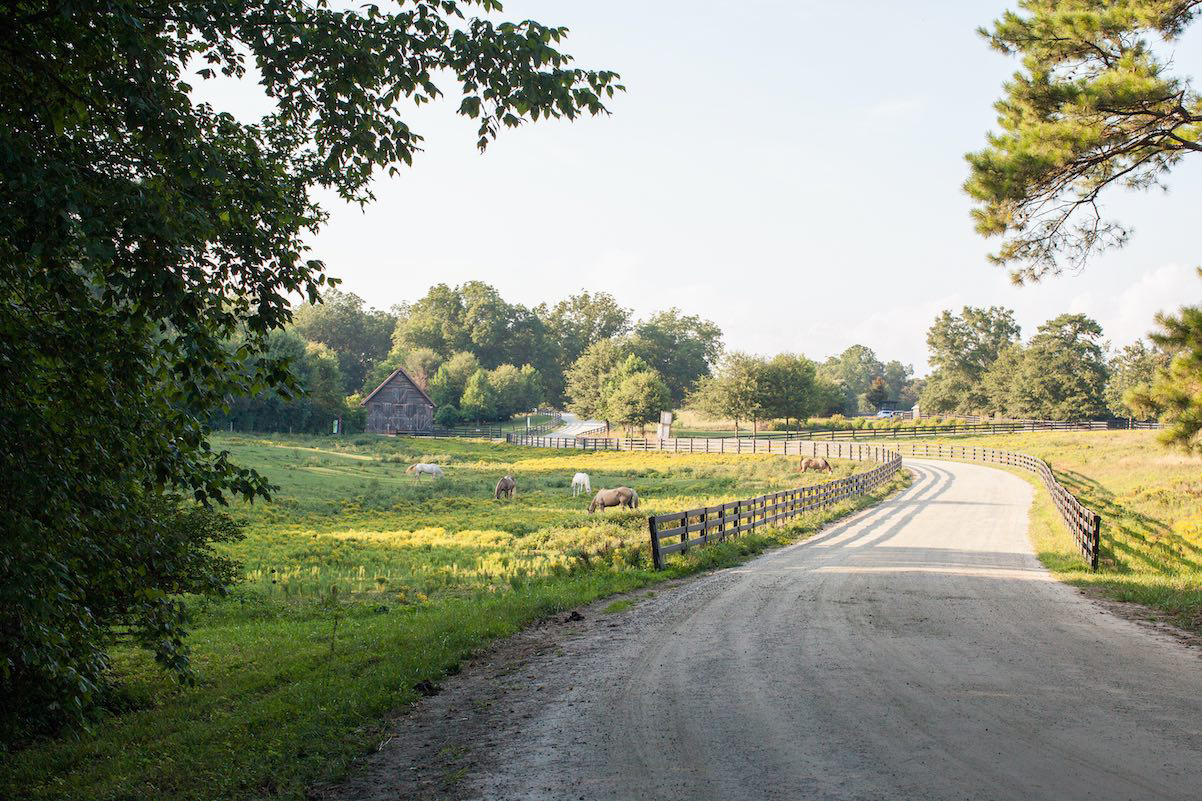Story at a glance:
- Organic crop production refers to the practice of growing crops that are free from synthetic pesticides, chemical fertilizers, GMOs, and other prohibited substances.
- Any producer who wishes to label their operation, produce, or products as organic must apply for certification through the National Organic Program.
- Organic farming operations typically prioritize regenerative practices like crop rotation, composting and manuring, soil conservation, and more.
Many may be familiar with the term “organic,” but not may truly understand or have a concrete definition for it. With the demand for organic products growing, it’s important to understand what organic really means.
This article is intended to serve as an introductory guide to organic farming—specifically in the United States—and explores the benefits, disadvantages, regulations, and general practices associated with organic crop production.
What is Organic Crop Production?

Located in the Serenbe wellness community, Serenbe Farms was one of the first organic farms in the state of Georgia. Photo by J. Ashley
Organic crop production is an agricultural practice dedicated to growing food without the use of synthetic pesticides, fertilizers, or genetically modified organisms (GMOs). Organic farming places an emphasis on using less-intensive cultivation methods and practices like composting that build and maintain soil fertility.
In 2008 IFOAM – Organics International (formerly the International Federation of Organic Agricultural Movements) defined organic farming as “a production system that sustains the health of soils, ecosystems, and people. It relies on ecological processes, biodiversity and cycles adapted to local conditions, rather than the use of inputs with adverse effects. Organic Agriculture combines tradition, innovation, and science to benefit the shared environment and promote fair relationships and good quality of life for all involved.”
When applied to farming operations, produce, and food products, the term organic is legally regulated by a country’s governing body. As a result organic standards often vary from one nation to the next, though there is considerable overlap in the general principles and methodologies.
The Organic Foods Production Act of 1990
The Organic Foods Production Act (OFPA) of 1990 is one of the most important pieces of organic farming legislation in the United States and required “the Secretary of Agriculture to establish a National List of Allowed and Prohibited Substances which identifies synthetic substances that may be used, and the nonsynthetic substances that cannot be used, in organic production and handling operations.”
In addition to this list of prohibited substances, the OFPA also led to the authorization of a National Organic Program administered by the USDA’s Agricultural Marketing Service (AMS). The act also established the National Organic Standards Board to assist in the development of standards regarding substances fit for use in organic growing operations.
Though substantial in its own right, the OFPA ultimately represents the minimum standards required for organic production—each state is then allowed to adopt additional requirements as they see fit, provided they have been reviewed and subsequently approved by the USDA.
The National Organic Program
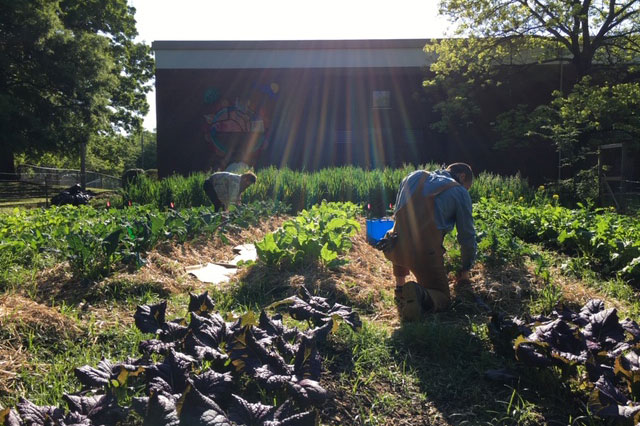
Photo courtesy of Wylde Center.
Established in 2000, the National Organic Program (NOP) is the federal regulatory framework that governs fresh and processed organic food products in the United States.
The NOP Certification Process
Any farmer who intends to use the word “organic” to describe their businesses and products must be certified as such under the NOP. The only exception to this rule is producers whose annual sales do not exceed $5,000 USD, though they still must comply with NOP standards and are barred from using the term “certified organic” to describe their products.
Upon certification the product will receive a USDA Organic seal. Only products that contain at least 95% raw, fresh, and/or processed organic ingredients may qualify for a USDA Organic Seal, though products that contain at least 70% organic ingredients may be issued a “Made with Organic” label.
The certification process typically takes 3 to 6 months to complete and encompasses several steps, of which we’ve outlined below:
1. Submit Application
A farmer whose land is eligible for organic status must first submit their application to an accredited certification agent (ACA). ACAs are state or private certifiers who have been accredited by the NOP—a full list of ACAs may be found on the USDA’s website.
The application package must include the following documents:
- Application
- Organic System Plan
- Farm map
- Field histories for new fields
- Operator agreement
- Report of organic crop yields and sales
Of these documents, the Organic System Plan (OSP) is perhaps the most important. The Organic Foods Production Act of 1990 defines an OSP as “a plan of management of an organic farming or handling operation that has been agreed to by the producer or handler and the certifying agent and that includes written plans concerning all aspects of agricultural production or handling described in this title including crop rotation and other practices as required under this title.”
An OSP represents the producer’s opportunity to explain in detail the practices used to operate and manage their farms. The OSP should cover everything from the crops being grown and the sources of seeds/seedlings to pest/weed management protocols and sales/marketing procedures.
2. Application Review
Once submitted, the certifier will review the application and determine whether the practices outlined within the farm plan are sufficiently detailed and whether the farm seems to meet organic regulations. Eligibility for certification requires that the farm be free of any and all prohibited substances for a period of at least three years, or 36 months, prior to the harvest of those crops intended to be marketed as organic.
Producers who have owned their operations for less than three years must be able to provide verification from the land’s previous owner that no prohibited substances were used.
3. Inspection
If the certifier determines that the farm is eligible for organic status, an inspector—who represents the certifying agent—will be sent out to inspect the farm. The inspector will verify that the OSP accurately reflects the operation and is being followed as written, making note of any potential violations or problem areas. Inspectors must be granted access to all records and documents pertaining to past and present growing practices. If deemed necessary, an inspector may also request samples for residue testing to confirm whether pesticide residue levels are within an acceptable range.
An exit interview will be conducted at the end of the inspection, after which the inspector will write up their report and send it to the certifying agency. Every organic farm must be re-inspected each year to verify that it still complies with NOP and USDA regulations.
4. Inspection Report Review
After inspection, the certifier will review the inspection report and decide whether or not the farm actually meets all regulation requirements for organic status. Any issues noted in the exit interview will be assessed for their severity and ultimately determine whether certification is issued immediately or if it will be delayed.
If the problem is minor and does not threaten the organic integrity of the crop or if additional information is required, a certificate with conditions may be issued. If the issue does threaten the organic integrity of the product, the certifier will send a Notice of Noncompliance detailing the specific areas of concern that must be remedied. Producers may contact the Appropriate Technology Transfer for Rural Areas service if they need help resolving an issue.
In the event that the area of concern represents a major noncompliance problem that cannot be corrected, the certifier will issue a Notice of Denial of Certification. If major noncompliance issues are identified during certification renewal, a Notice of Noncompliance will be sent, followed by either a Notice of Proposed Suspension or Notice of Proposed Revocation. The producer is then given the opportunity to appeal the proposed action; if the appeal is denied or if no appeal is given, the farm’s organic certification will be suspended or revoked.
5. Certificate Issued
If the farm passes inspection and meets all regulation requirements, a certificate is issued denoting compliance with organic crop production guidelines. The certificate will remain in effect until it is surrendered, suspended, or revoked. Every organic operation must renew its certification each year or voluntarily surrender it.
The renewal process requires the producer to update their OSP, sign a new operator agreement, address any noncompliance issues, undergo annual inspection, and pay the annual certification fee.
The Benefits of Organic Crop Production
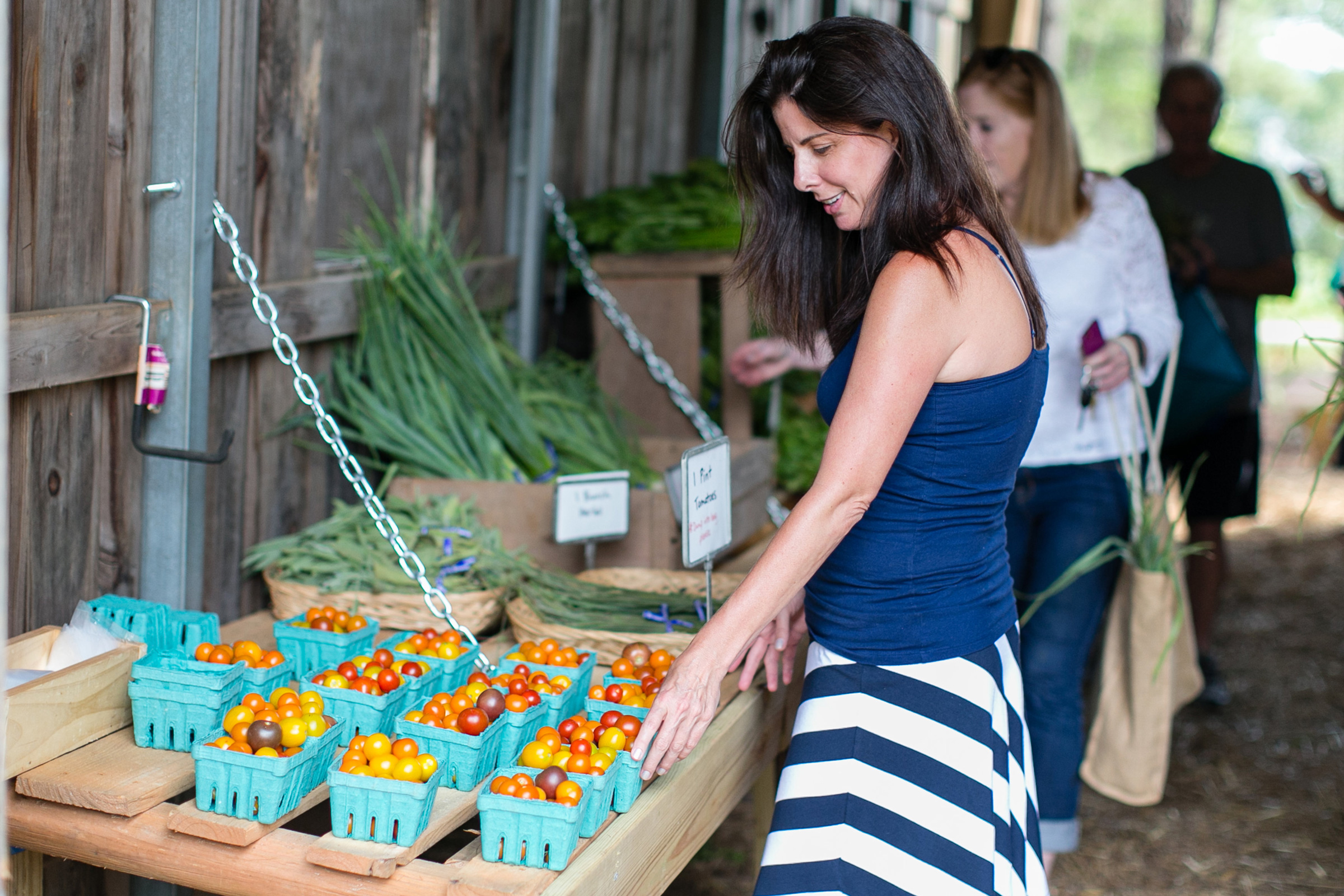
Organic farming operations improve soil health, increase biodiversity, and provide economic and social opportunities for their surrounding communities. Photo courtesy of Serenbe
Many benefits come with the practice of organic crop production, many of which also have a positive impact on the environment and workers.
- Improved soil health. Through practices like crop rotation, composting, cover crops, and more, organic crop production helps improve and maintain soil health.
- Increased biodiversity. Organic farming practices like intercropping and habitat building for beneficial predators help increase biodiversity, allowing them to more closely imitate the ecosystems found in nature; this ultimately serves to improve pest and disease resilience.
- Reduced exposure to harmful substances. Organic crop production regulations prohibit the use of many synthetic pesticides and fertilizers that are known to be hazardous to human and environmental health.
And while not true of all organic growing ventures, organic farms—especially those that operate on a smaller-scale—can improve the food security and independence of their surrounding communities. Serenbe Farms, for example, is an organic farm in Georgia that markets their goods through a Community Supported Agriculture (CSA) farm share program. CSA members receive up to seven items (or roughly 5 to 10 servings of vegetables) each week during the CSA season for only $20 to $30.
The Disadvantages of Organic Crop Production
As we’ve seen, there are undeniable benefits associated with organic farming—but it would be wrong to suggest that the practice in and of itself is intrinsically “good” or that it is always as sustainable as advertised.
- Lower yields. One of the biggest disadvantages of organic crop production is that it tends to produce lower yields each harvest season when compared to those crops cultivated using non-organic methods.
- Increased land use. These reduced harvests in turn translate to increased land use in order to produce the same amount of crops as conventional farming practices.
- Higher food costs. Anyone who’s ever bought organic produce or products can attest to the fact that they typically cost more than their non-organic counterparts; this is largely due to a combination of the limited supply of organic foods compared to their overall demand and the extra labor that goes into producing organic crops.
And while organic crop production is often propped up as a means of fighting climate change, there is no guarantee that an organic farm will produce fewer greenhouse gasses (GHGs) than a conventionally-managed farm—in fact, some organic farms have been recorded as generating more GHGs than their non-organic counterparts.
A 2019 life cycle assessment studying the hypothetical impact of converting both England and Wales’ agricultural sectors to organic farming methods, for example, found that such an endeavor would actually result in net gains in GHG emissions as a result of the increased overseas land use for the cultivation and import of crops required to balance out the lower yields of domestic organic farms.
The 4 Principles of Organic Farming
According to IFOAM, there are four core principles that make up the foundation of organic farming: health, ecology, fairness, and care.
- Health. Organic methodologies should enhance and sustain the health of soil, plant, animal, human, and planet.
- Ecology. Organic crop production should be rooted in the practice of working with, emulating, and sustaining living ecological systems and cycles.
- Fairness. Organic agriculture should help build relationships that promote and ensure fairness with regard to life opportunities and the common environment at large.
- Care. Organic farming should be practiced and managed in a precautionary manner that protects the health and wellbeing of both current and future generations and the environment.
And while there is no universal standard codifying organic crop production, these four principles can be seen in almost every country’s organic farming guidelines and regulations.
Guidelines for Organic Crop Production

Photo courtesy of Il Borro
Beyond these foundational principles, there are several agricultural practices that typically define organic farming, as identified by the USDA’s organic crop production guidelines and requirements. And while by no means exhaustive, the sections below provide a general overview of those practices.
Soil Fertility
“Feed the soil, not the plant” is a common agricultural saying, one that perfectly describes organic crop production in a nutshell. Building a healthy soil profile in turn ensures that the crops cultivated in said soil are also healthy, more drought tolerant, possess a higher tolerance to pests, and are better able to resist diseases.
Maintaining proper soil health is built into the very foundation of organic crop production, so much so that the OFPA actually stipulates that “an organic plan shall contain provisions designed to foster soil fertility, primarily through the management of the organic content of the soil through proper tillage, crop rotation, and manuring.”
In this section we’ll discuss the impact of erosion control methods, manuring, and composting on soil fertility in organic farming operations (crop rotation will be discussed at length in a separate section altogether).
Erosion Control & Soil Conservation
Soil conservation is incredibly important to maintaining arable land suitable for crop production—organic or otherwise—and the single most important aspect of soil conservation is to keep the ground covered and undisturbed for as much of the year as possible to minimize the loss of topsoil.
There are several methods for conserving soil and preventing erosion, including:
- Cover crops. A cover crop is any crop that has been planted with the intent of providing soil cover; cover crops primarily protect against erosion caused by wind and water but also help build soil health, provide habitats for beneficial insects, and suppress weeds.
- Conservation tillage. Conventional tilling practices churn up large amounts of soil, leaving it highly vulnerable to erosion; conservation tillage, on the other hand, does the bare minimum to disturb the soil and allows leaves, stems, and other crop residues on the surface to help prevent erosion.
- Strip cropping. A sowing method in which the rows alternate between strips of row crops (e.g. soybeans, corn) and strips of closely sown crops (e.g. small grains); strip cropping creates natural dams in the field, reducing the effects of water erosion.
- Alley-cropping. Similar to strip cropping, alley-cropping is an agroforestry practice that involves planting rows of crops in the wide alleyways between closely-spaced rows of maturing trees; alley-cropping greatly reduces the amount of topsoil lost to wind erosion.
- Contour cultivation. Where conventional plowing methods plow straight across or straight up and down a slope, contour cultivation plows across a slope in accordance with its elevation contour lines; contour cultivation helps reduce the amount of topsoil lost to stormwater runoff.
- Windbreaks. Another tried-and-true agroforestry practice, windbreaks consist of at least one row of trees and/or woody shrubs planted around the perimeters of fields; windbreaks are capable of reducing wind speeds up to 30 times their height downwind, reducing the effects of wind erosion.
Most organic growing operations implement a combination of these soil conservation methods depending on site-specific conditions. Some experimentation may be required to figure out which methodologies work best for your particular operation.
Manuring
Manuring is a soil building practice that introduces organic matter into the soil, traditionally by way of livestock excrement. The USDA does not require that organic farms produce their own manure, nor do they require producers source manure from organic livestock operations, though testing may be necessary to determine whether purchased manure contains excessive levels of prohibited contaminants.
Because animal-derived manure has the potential to harbor harmful microorganisms, any raw, uncomposted animal manures used in organic growing operations are subject to what is known as the 90-120 day rule. This rule stipulates that manure must be either incorporated into the soil no less than 120 days before harvest when the edible portion of the crop comes into direct contact with the soil OR blended into the soil no less than 90 days prior for other food crops.
There are two other types of manure approved by the NOP that are subject to different regulations:
- Processed animal manures. The USDA also allows producers to use heat-treated, processed animal manures (or manures heated to at least 150℉ for 1 hour and dried to ≤12% moisture) in organic growing operations; processed animal manures are not subject to the 90-120 day rule.
- Green manures. In the agricultural sense, green manure is any crop grown specifically with the intent of incorporating it back into the soil while it is still green or after it has produced a large amount of biomass; like animal manure, the goal of green manure is to reintroduce organic matter into the soil.
When it is utilized properly, manure can replace or greatly reduce the need for purchased fertilizers. All manuring processes and systems should be documented, described in the OSP, and approved by the certifier.
Composting
Besides manuring, composting is one of the oldest and most widely used methods for conserving soil nutrients and maintaining soil health. Compost may contain organic matter from either plants or animals. Animal manure that has been composted according to USDA organic regulations is no longer considered manure and is therefore exempt from the 90-120 day rule. All compost used in organic farming operations must be created in accordance with the criteria set forth in § 205.203(c)(2).
There are two specialized types of composting strategies outlined by USDA organic crop production guidelines: compost teas and vermicomposting.
- Compost tea. Describes a liquid produced by extracting beneficial microbes (e.g. protozoa, nematodes, bacteria, et cetera) from compost that is used to then increase the population of beneficial microorganisms in the soil to which it is applied; compost tea made from uncomposted manure must follow the 90-120 day rule and should be tested for harmful pathogens before application.
- Vermicomposting. Refers to composts that use worms to break down and digest feedstocks, of which may contain organic matter of both plant and animal origin; vermicomposting is technically not subject to the 90-120 day rule, but the NOP does recommend adhering to it if animal manures are included.
All composting systems and processes must be documented, described at length in the OSP, and reviewed by the certifier for regulation compliance.
Seeds & Planting Stock
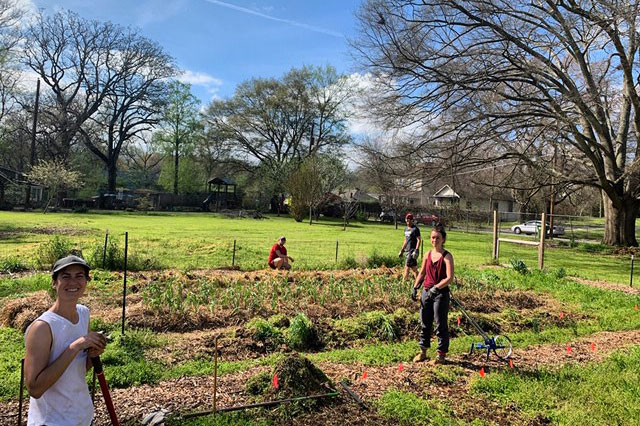
Photo courtesy of Wylde Center.
USDA organic regulations cover three core categories of propagation methods: seeds, annual seedlings (transplants of annual crops that have been removed from their original place of production), and planting stock (any plant or plant tissue other than annual seedlings).
Seeds
It is a requirement that organic farming operations must use organic seeds unless an equivalent organic variety is not commercially available. If conventional seeds are used, the producer must provide documentation proving that the organic seed was not available, the conventional variety was not genetically modified or engineered, and that the seeds were not treated with any prohibited materials or substances.
Annual Seedlings
Any transplants, starters, or seedlings used to grow annual organic plants must have been grown in accordance with organic regulations. This applies to sweet potatoes, peppers, tomatoes, flowers grown from seedlings, and other similar crops.
It is possible to obtain a variance allowing the use of conventional seedlings to grow organic crops, but only if the original starters were destroyed by flood, drought, fire, hail, tornado, earthquake, wind, excessive moisture, or some other business interruption. Variances may be obtained through an accredited certifier.
Planting Stock
If possible, organic planting stock should be used for organic farming operations. The USDA recognizes that many plant varieties are not yet available in sufficient quantities and allows the use of nonorganic planting stock when necessary but requires that the producer search—and document that search—for organic stock before resorting to nonorganic alternatives.
Any nonorganic planting stock for perennial plants must be managed under organic conditions for a period of at least 12 months before the first harvest of an organic crop. The rules for planting stock regarding annuals are the same as those requirements outlined for annual seeds.
Biodiversity & Crop Rotation
Crop rotation is an agricultural practice that refers to the planting of different crops on the same plot of land across a sequence of growing seasons. Rotating crops between fields helps avoid depleting the soil of specific nutrients, reduces weed and pest pressure, suppresses soil-borne diseases, and minimizes the likelihood of pests and weeds developing genetic tolerance. And while not unique to organic farming operations, organic farms are the only agricultural systems in the United States that are required to utilize crop rotation.
The USDA has different guidelines regarding crop rotation depending on the type of plants being grown.
Annual Crop Rotation
Annuals, or those crops that germinate, flower, disperse seeds, and die within one growing season, make up a large portion of the vegetable crops grown throughout the continental United States. These crops are relatively easy to fit into a rotation schedule, though it is important to rotate annuals strategically, alternating between row crops and cereals, sod, and cover crops so as to avoid soil degradation.
Perennial Crop Rotation
Crop rotation guidelines regarding perennials—that is, plants which live more than two seasons and regrow each spring—are a bit more confusing, as by definition these crops cannot be rotated from one field to another each growing season. Certain perennials can, however, be included in long-term crop rotation schedules, of which may last anywhere from a few years to several decades.
Biodiversity
For perennial crops that cannot feasibly or practically be incorporated into long-term crop rotation systems, producers must instead introduce biodiversity using some other method. This typically isn’t a problem, as most organic farmers actively choose to increase the biological diversity of their operations, as it is incredibly advantageous to do so.
Managing a riparian forest buffer, for example, is a common agroforestry practice that increases biodiversity along the edges of farming operations located in close proximity to water bodies. These forest buffers typically consist of three distinct zones: an unmanaged woody zone nearest to the water body followed by a woody zone that may be managed for additional income and which is bordered by a zone of grasses, sedges, and herbaceous non-woody vascular plants (e.g. wildflowers).
All three zones provide habitats for a range of beneficial predators, including: foxes and coyotes (to manage rodent populations), bats and small birds (to help control insect populations), and raptors and owls (to ward off fruit-eating birds and keep rodent populations in check).
Managing Weeds, Pests & Diseases
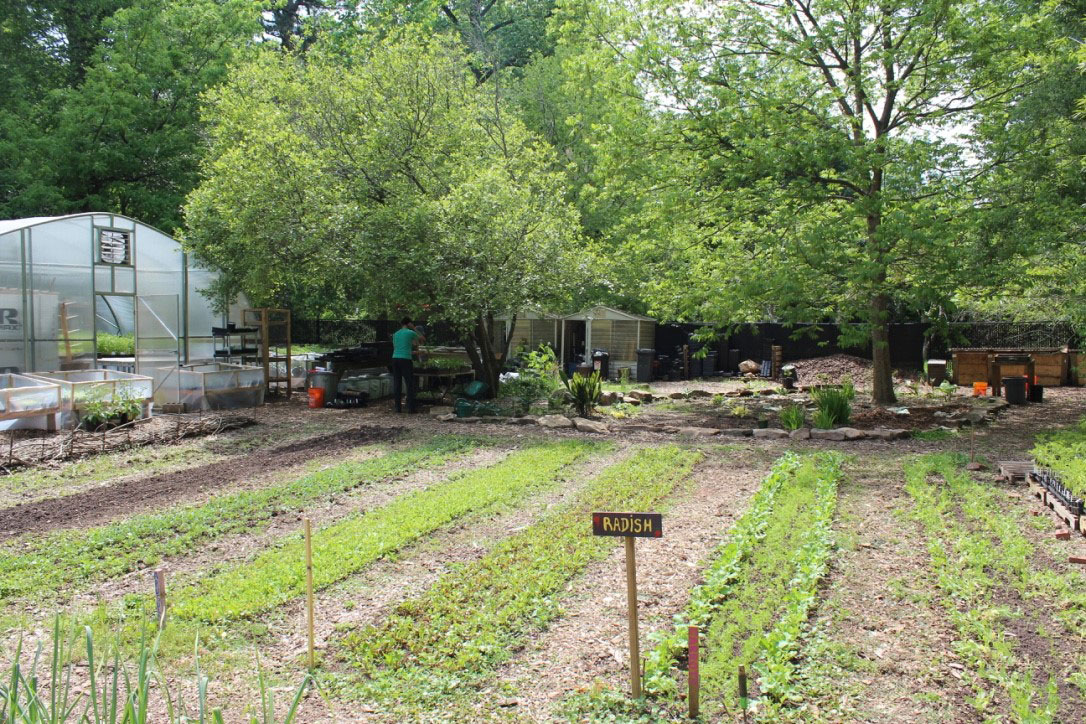
Photo courtesy of Wylde Center
The USDA’s organic regulations outline a three-level hierarchical approach to managing weeds and preventing pest and disease outbreaks:
- Level A. Utilizes a systems-based approach built on the idea that a healthy and well-designed organic system will naturally regulate itself to minimize the risk of pest and disease outbreaks.
- Level B. If the systems-based approach is not able to effectively mitigate pests and diseases, mechanical and physical practices traditional to organic crop production may be implemented, along with the use of natural or non-synthetic materials.
- Level C. Should further action be required to control pests and disease outbreaks, inputs like botanicals and biologicals may be introduced; if necessary, synthetic substances allowed under the National List § 205.601 Synthetic may also be utilized.
The strategies for managing weeds differ from those used to manage pests and diseases, though both utilize the same hierarchical system.
Weeds
Examples of Level A weed-control practices include:
- High seeding rates. It is possible to smother weeds by planting certain crops at a high rate or by decreasing the distance between crop rows.
- Sanitation. As the most effective method of long-term weed control, sanitation refers to the practice of preventing weeds—and even crops—from ever going to seed in the first place.
- Nurse crops. Also referred to as companion crops, nurse crops are often sown near other crops with similar growing requirements to help suppress weeds during the plants’ establishment.
- Cover crops. Fast-growing cover crops are an effective means of controlling weeds, though they should not be allowed to self-seed, lest they become weeds for the next planting season.
If further action is required, the producer may implement Level B strategies, examples of which include:
- Transplanting. Instead of sowing directly from seed, transplanting seedlings can give crops an edge over crowding weeds.
- Weed cloth. Common in perennial growing operations, weed cloth helps control weeds for several years at a time.
- Mowing. Weeds can also be controlled via regular mowing, as is standard in organic orchards.
- Hand weeding. As perhaps the oldest method for managing unwanted plants, hand weeding simply refers to the laborious process of removing weeds by hand.
- Mulching. Laying down a thick layer of organic mulch (e.g. wood chips) can smother weed seedlings and prevent them from growing; mulch also introduces organic matter to the soil, improves moisture retention, and lowers soil temperature.
Should both levels fail, it may be necessary to use certain synthetic substances—including soap-based herbicides, non-PVC plastic mulch, and mulches made from recycled paper—to control weed populations.
Pests & Diseases
Possible Level A strategies for managing pests and diseases include:
- Use of cover crops. Certain cover crops (e.g. mustard, rapeseed) are proven to be effective at suppressing nematodes, a type of pest that damages the root systems of crops, leaving them vulnerable to infections and disease.
- Intercropping. Growing two or more crops in close proximity to one another is referred to as intercropping and helps manage pest outbreaks by bolstering biodiversity.
- Introduction of trap crops. Trap crops are small groups of crops planted with intent of drawing pests or a particular pest away from the primary crop; the trap crop is typically destroyed in the process of killing the pests they attract.
- Provisioning of habitats for beneficial predators. Describes the intentional planting of certain plant species that attract and provide habitats for beneficial predators of problem pests.
Acceptable Level B practices include:
- Canopy management. Refers to the careful training and pruning of trees in orchards as a means of reducing the risk of certain diseases caused by a lack of airflow.
- Solarization. Describes the process of covering soil with plastic during the summer to kill any existing pathogens; solarization is beneficial in that it does not allow the soil to get hot enough to kill the microbial spores needed for proper soil health.
- Direct introduction of beneficial insect predators. Certain insect predators, such as ladybugs, can be purchased in bulk and released into a field to help manage pests.
If neither are sufficient, approved synthetic substances—such as boric acid, hydrogen peroxide, peracetic acid, or copper sulfate—may be brought in to manage pests and diseases.
Post-Harvest & Labeling
Maintaining the organic integrity of a crop after it has been harvested is an incredibly important step that should not be undervalued. Certified organic farming and handling operations should develop standard procedures for harvesting, washing, storing, transporting, and labeling organic produce. These procedures should be written into the OSP and must be approved by the certifier.
When it comes to labeling organic retail products, the USDA outlines four categories based on product composition:
- “100% organic.” Reserved for those products that contain 100% organic ingredients, such as most raw, unprocessed farm products.
- “Organic.” May be used to label any product that contains between 95 and 99.9% organic ingredients.
- “Made with Organic _______.” Can be used to label products that contain at least 70% organic ingredients.
- Organic ingredients. Products that contain less than 70% organically produced ingredients can specify that an ingredient is organic in the ingredients list.
As with other organic regulatory items, all labels should be reviewed by the certifier to ensure that they comply.

